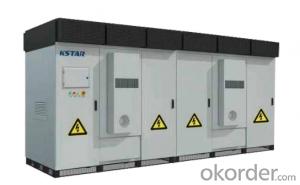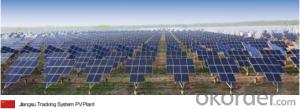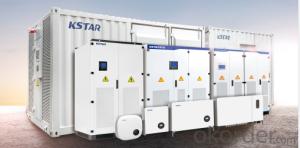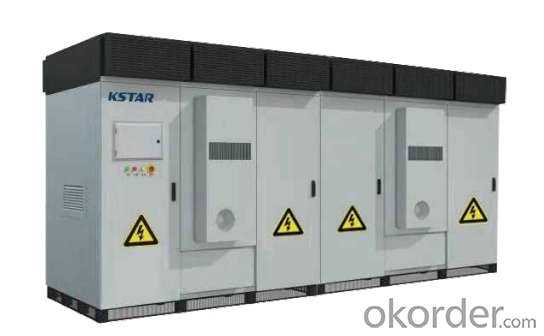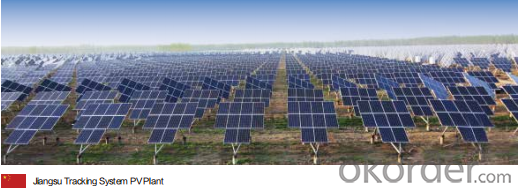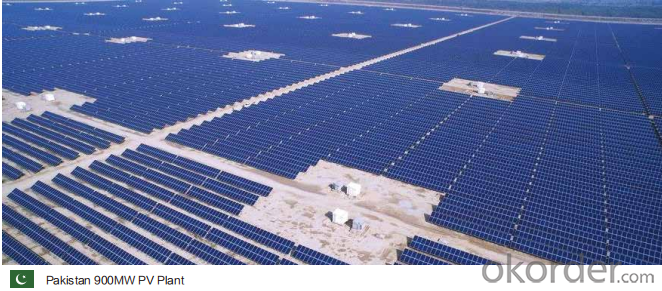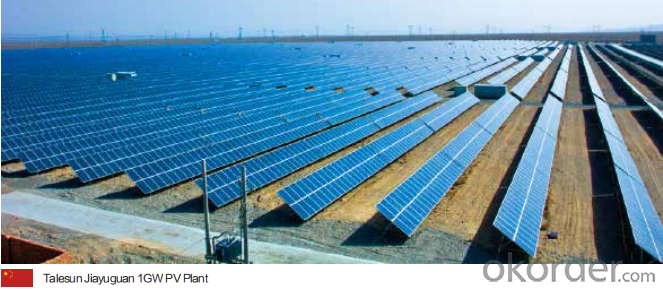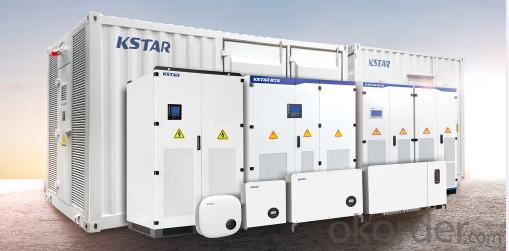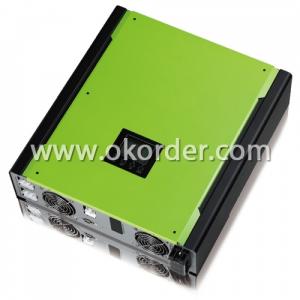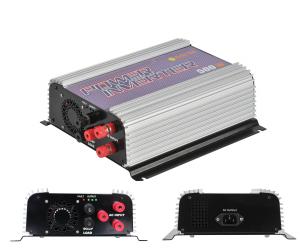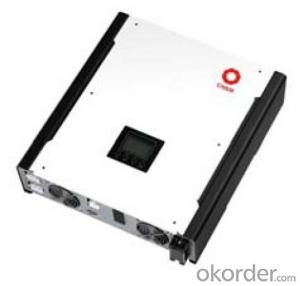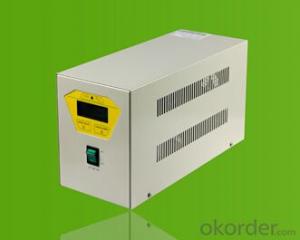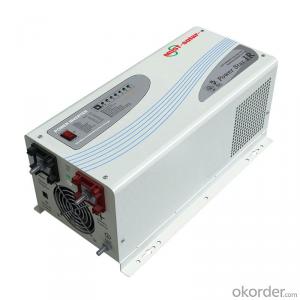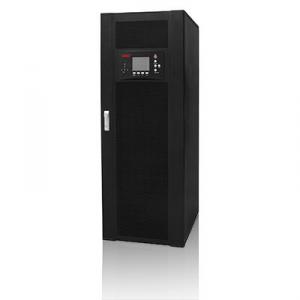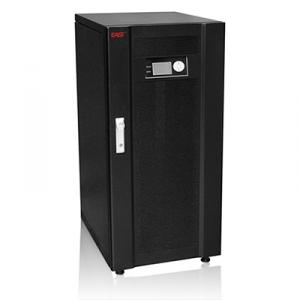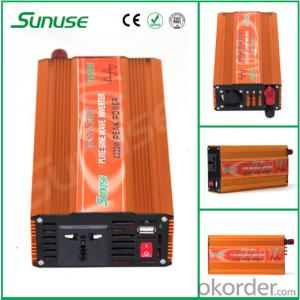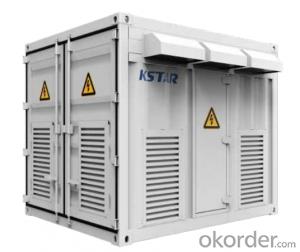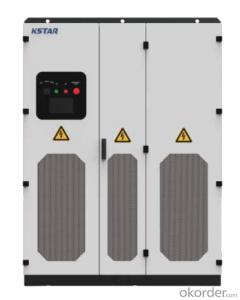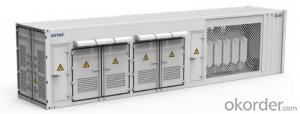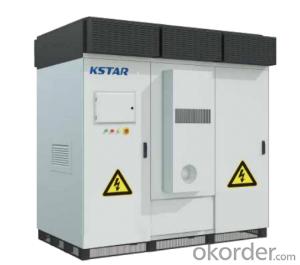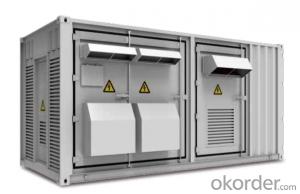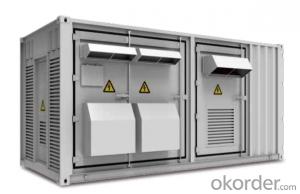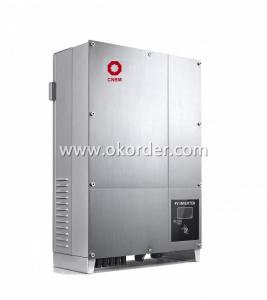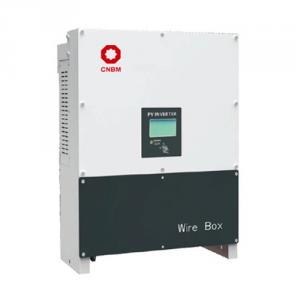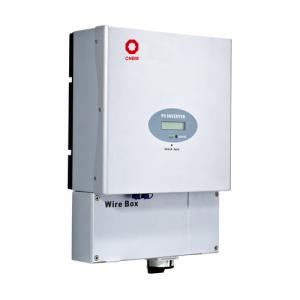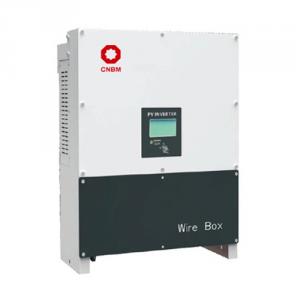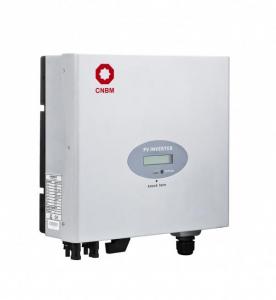Enphase Solar Inverter DC1500V Central Inverter GSM5000D / GSM6250D
- Loading Port:
- China main port
- Payment Terms:
- TT OR LC
- Min Order Qty:
- 50 pc
- Supply Capability:
- 15000 pc/month
OKorder Service Pledge
OKorder Financial Service
You Might Also Like
Specification
Product Description:
★Max. PV Voltage up to 1500V Max. 48 DC inputs
★Dustproof protection Modular design for Easy maintenance
★Max. DC/AC ratio up to 1.8 Full power output under 55℃
★AGC/AVC Night SVG function LVRT/HVRT/FRT function
Technical Specifications:
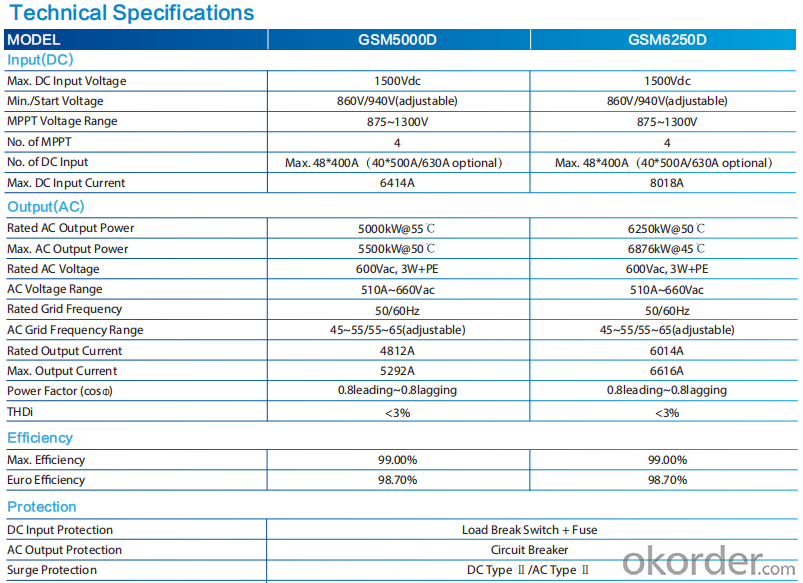
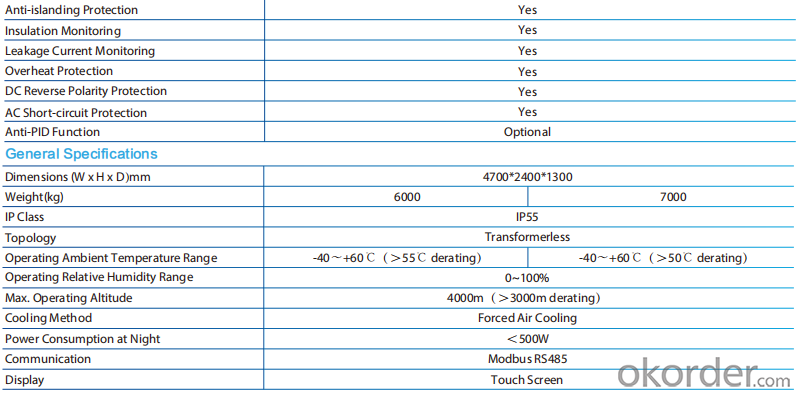
FAQ:
Q:How the output voltage of the PV inverter and the grid-connected voltage are determined
Inverter is the DC power (battery, battery) into alternating current (usually 220V, 50Hz sine wave). It consists of inverter bridge, control logic and filter circuit. Widely used in air conditioning, home theater, electric wheel, power tools, sewing machines, DVD, VCD, computer, TV, washing machine, range hood, refrigerator, video recorders, massage, fan, lighting and so on. In foreign countries
Q:Installation and maintenance of photovoltaic grid - connected inverter
only when the local power sector permission by the professional and technical personnel to complete all the electrical connection before the inverter can be connected.
Q:What is the difference between a PV grid-connected inverter and an off-grid inverter?
Off-grid inverter is equivalent to their own to establish an independent small power grid, mainly to control their own voltage, is a voltage source.
Q:After the PV inverter, how to achieve the same period before the network?
Solar panel simulator: with MPPT function, simulated morning, noon, afternoon, evening, rainy weather, solar panels produced under different conditions in different voltages.
Q:Is the PV inverter a current source or a voltage source?
According to the waveform modulation method can be divided into square wave inverter, stepped wave inverter, sine wave inverter and modular three-phase inverter.
Q:Photovoltaic grid-connected inverter without DC emc how will happen
Solar photovoltaic power generation technology is the use of solar cells, the photovoltaic effect of semiconductor materials, solar radiation can be directly converted into a new type of power generation system, solar energy is a radiant energy, solar power means --- to direct conversion of sunlight Into electricity,
Q:What is the difference between low voltage grid connection and medium voltage grid connection?
For photovoltaic power plants when the power system accidents or disturbances caused by photovoltaic power plant grid voltage drop, in a certain voltage drop range and time interval, the photovoltaic power plant can ensure that non-off-line continuous operation.
Q:Is the grid side of the grid and the inverter?
The grid load side of the grid is the grid. The inverter is an important part of the PV grid-connected system and can not be regarded as an external load. Photovoltaic power generation system is included in both grid and off-grid.
Q:PV grid-connected inverter and independent inverter in the control of what is the difference
The independent inverter in the output voltage phase amplitude of the frequency control is initially set good. Independent inverter, you should refer to off-grid inverter, do not need to consider the grid situation.
Product Images:
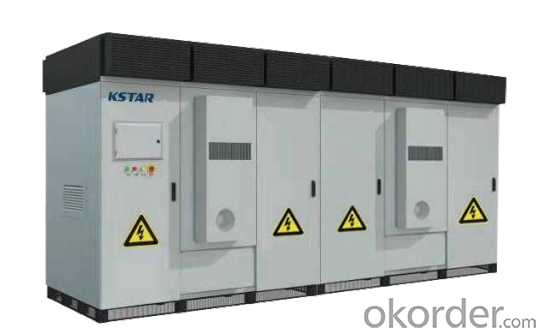
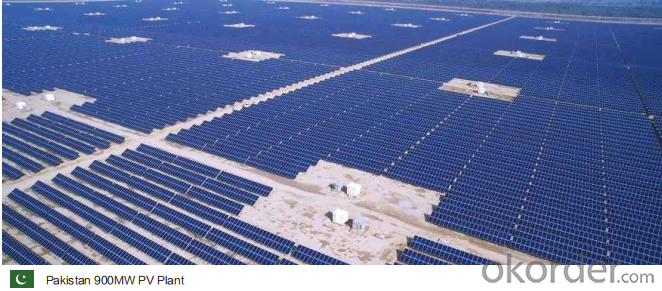
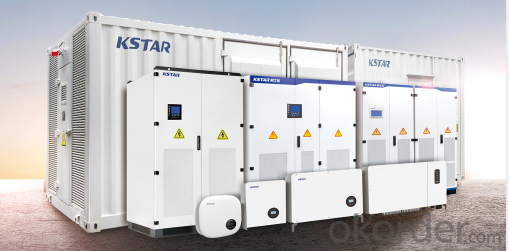
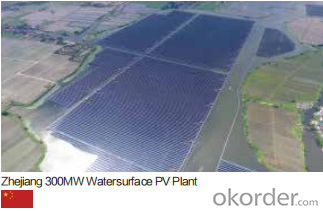
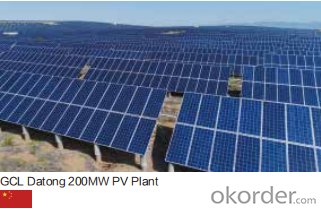
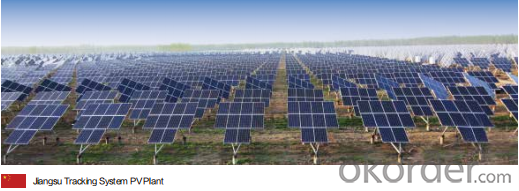
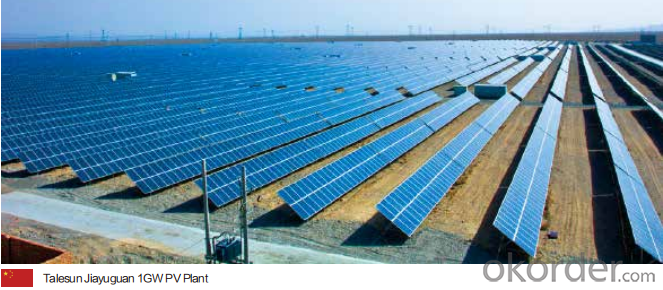
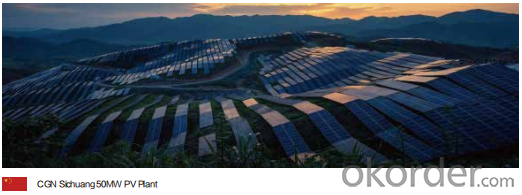

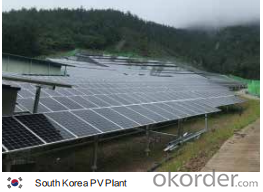
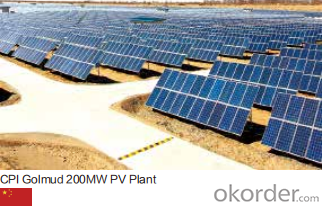
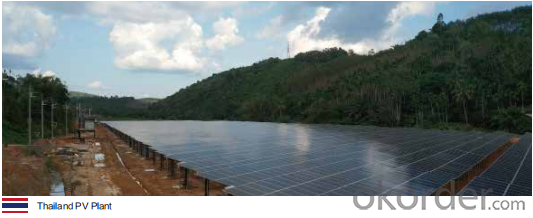
Production Process Photos:
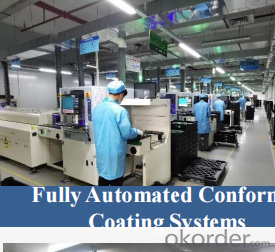
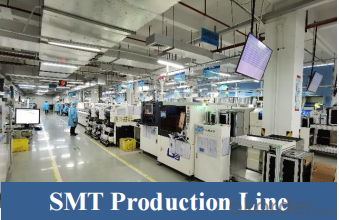
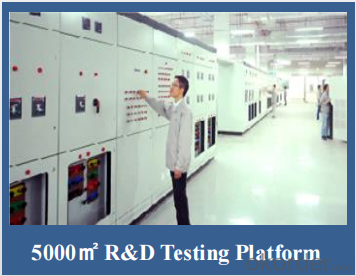
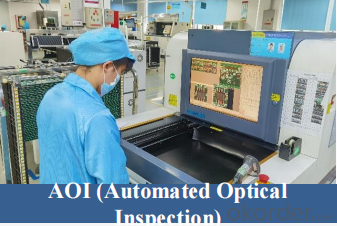
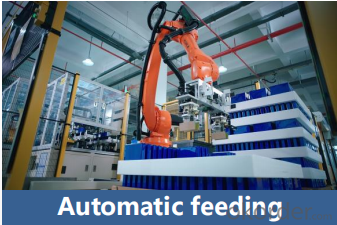
- Q: Are there any noise emissions from a solar inverter?
- Yes, solar inverters generally produce some level of noise emissions. However, the noise generated by modern solar inverters is typically very low and often negligible. The noise is mainly caused by the cooling fans within the inverter, which are designed to keep the device cool during operation. Nonetheless, the noise level is usually not bothersome and should not significantly impact the surrounding environment or living spaces.
- Q: Can a solar inverter be used with a backup generator?
- Yes, a solar inverter can be used with a backup generator. In fact, it is a common setup in off-grid or hybrid systems. The solar inverter works by converting the direct current (DC) produced by the solar panels into alternating current (AC) that can be used to power household appliances. When the solar panels are not generating enough power, the backup generator kicks in to provide the necessary electricity. This combination ensures a reliable and uninterrupted power supply.
- Q: Can a solar inverter be used in a building-integrated photovoltaic system?
- Yes, a solar inverter can be used in a building-integrated photovoltaic (BIPV) system. The solar inverter is an essential component in a BIPV system as it converts the direct current (DC) generated by the photovoltaic panels into alternating current (AC) that can be used to power the building's electrical loads or fed back into the grid.
- Q: Can a solar inverter be used in conjunction with a power factor correction device?
- Yes, a solar inverter can be used in conjunction with a power factor correction device. The power factor correction device is designed to improve the power factor of the electrical system and optimize the efficiency of energy usage. When connected to a solar inverter, it helps to correct the power factor of the solar power system, ensuring better utilization of the generated solar energy and reducing any potential power losses.
- Q: Can a solar inverter be monitored remotely?
- Yes, a solar inverter can be monitored remotely. Many modern solar inverters have built-in monitoring capabilities that allow users to track the performance and energy production of their solar system from a remote location. This can be done through software applications or web-based platforms that provide real-time data and analytics, enabling users to monitor the system's efficiency, diagnose issues, and optimize its performance without physically being present at the location of the inverter.
- Q: Can a solar inverter be used with a solar-powered desalination system?
- Yes, a solar inverter can be used with a solar-powered desalination system. A solar inverter is responsible for converting the direct current (DC) produced by solar panels into alternating current (AC) that is required to power electrical devices. In the case of a solar-powered desalination system, the solar panels generate DC electricity, which is then converted by the inverter to AC power to operate the desalination system's pumps, motors, and other electrical components. This allows the system to utilize solar energy efficiently and sustainably for the desalination process.
- Q: Photovoltaic grid-connected inverter problem
- But Baidu Encyclopedia clearly pointed out: the zero line is the secondary side of the transformer leads the neutral point of the line, and the phase line constitutes a circuit for power supply equipment.
- Q: Can a solar inverter be used in a solar-powered electric vehicle charging station?
- Yes, a solar inverter can be used in a solar-powered electric vehicle charging station. The solar inverter is responsible for converting the direct current (DC) generated by the solar panels into alternating current (AC) that can be used to charge electric vehicles. This allows the charging station to utilize the solar energy efficiently and power the charging process for electric vehicles.
- Q: Can a solar inverter be used with solar-powered ventilation systems?
- Yes, a solar inverter can be used with solar-powered ventilation systems. The solar inverter is responsible for converting the direct current (DC) generated by the solar panels into alternating current (AC) that can be used to power various devices and systems, including ventilation systems. By connecting the solar panels to the solar inverter, the AC energy produced can be used to operate the ventilation system, making it an efficient and eco-friendly solution.
- Q: How does a solar inverter provide ground fault protection?
- A solar inverter provides ground fault protection by continuously monitoring the flow of electrical current between the solar panels and the electrical grid. If the inverter detects any imbalance or deviation in the current, it quickly identifies it as a ground fault and activates protective measures to shut down the system. This ensures the safety of the system, preventing any potential electrical hazards or damage.
Send your message to us
Enphase Solar Inverter DC1500V Central Inverter GSM5000D / GSM6250D
- Loading Port:
- China main port
- Payment Terms:
- TT OR LC
- Min Order Qty:
- 50 pc
- Supply Capability:
- 15000 pc/month
OKorder Service Pledge
OKorder Financial Service
Similar products
Hot products
Hot Searches
Related keywords
